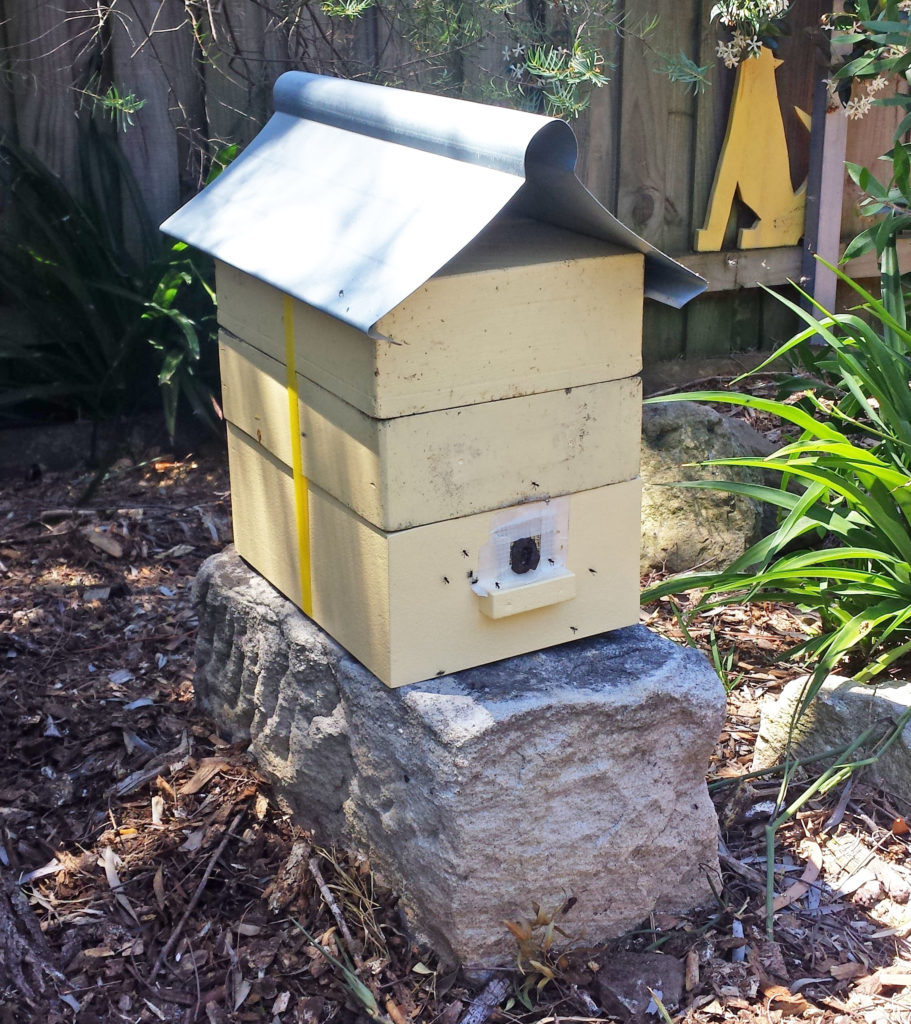Owners of hives of native stingless bees in Calga, Somersby and Wyong have been warned that they need to move their hives to avoid exposure to a toxic pesticide.
Australian Native Bee Association Varroa Response Subcommittee Chair Dr Anne Dollin said the Department of Planning and Industry (DPI) is using Fipronil, a pesticide which is very toxic to bees, to eradicate Varroa Mites within the Red Zones in the Central Coast area.
“As a result, native stingless bees within these areas will be at risk of poisoning for up to three years,” she said.
The Australian Native Bee Association (ANBA) has launched a campaign to help.
“The DPI program aims to destroy feral nests of European honeybees in the Red Zones, as these nests may harbour the devastating Varroa Mite,” Dollin said.
“Strict protocols are in place to prevent native insects, reptiles, birds and mammals from accessing the Fipronil-laced sugar syrup in the DPI baiting stations.
“However, the feral European honeybee nests that are killed by the baiting will contain Fipronil-contaminated honey, and this could attract native stingless bees.

“The honey in the feral nests may continue to be toxic to native stingless bees for up to three years.”
The ANBA provides detailed information on its website about the Varroa Mite baiting risks, with advice for stingless bee owners.
If possible, owners should consider moving their hives to a safe location outside the Red Zones for up to three years.
However, the ANBA has also launched a rescue program to help owners who do not have a safe place to take their hives: https://www.anba.org.au/varroa-response.
“The aim of our Australian Native Bee Association campaign is to help people move their stingless bees out of the Red Zones and keep the bees safe and strong,” Dollin said.
“Afterwards, when the hives are brought back, they will help repopulate the Red Zone areas.”
To read the DPI’s advice for people who keep native stingless bees in the Red Zones, visit: https://www.dpi.nsw.gov.au/emergencies/biosecurity/current-situation/varroa-mite-emergency-response/wild-european-honey-bee-management.
For further Information or to request help for your stingless bees, email varroa@anba.org.au.
Source:
Media release, Dec 14
Australian Native Bee Association



What about all the native bee hives in the bush including national parks. These are supposed to bee protected by law as I’ve been told since I was a kid but apparently not.